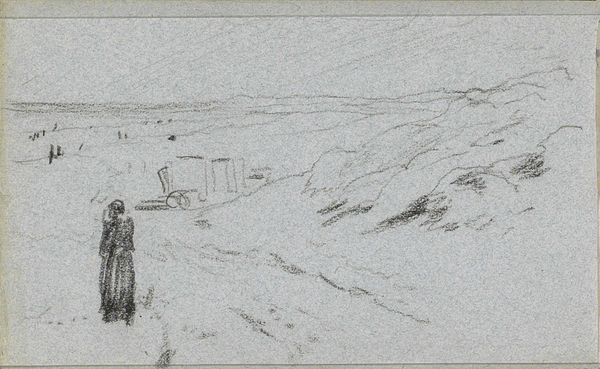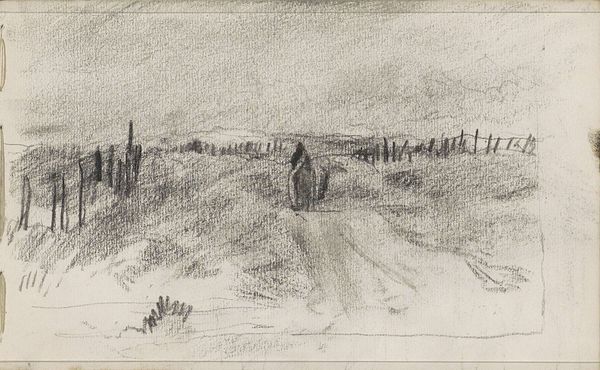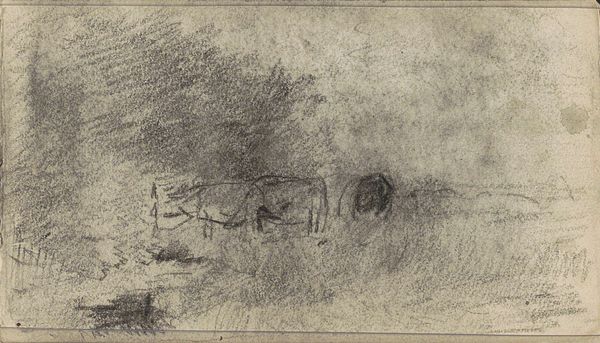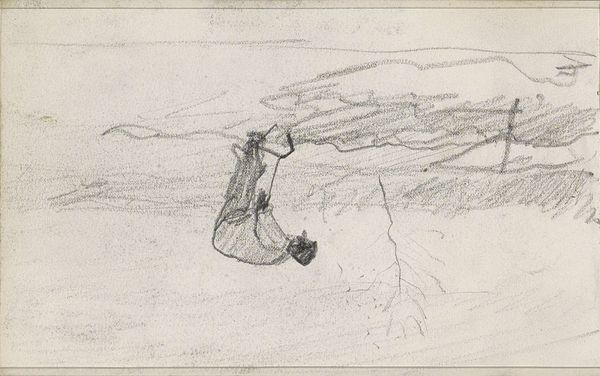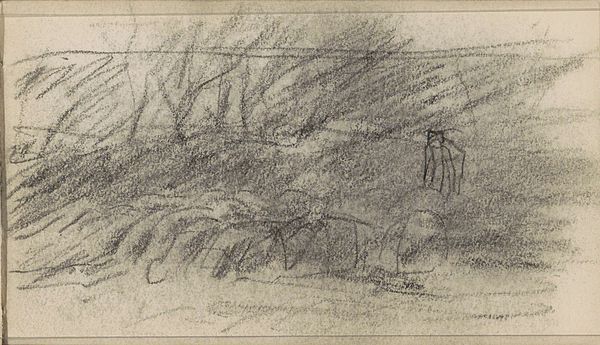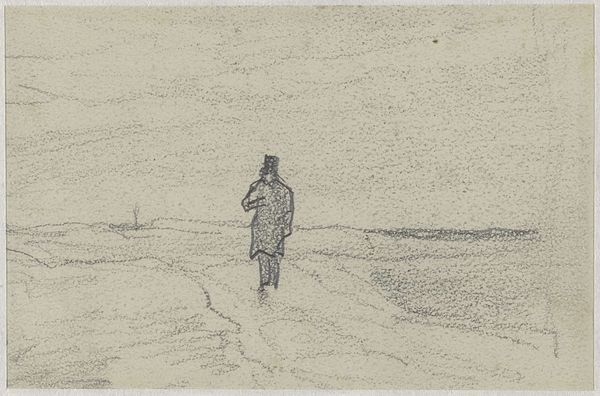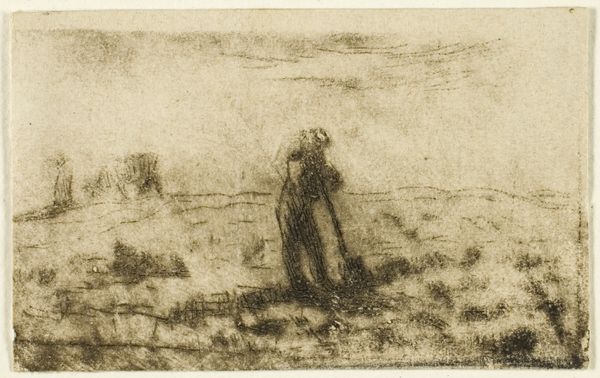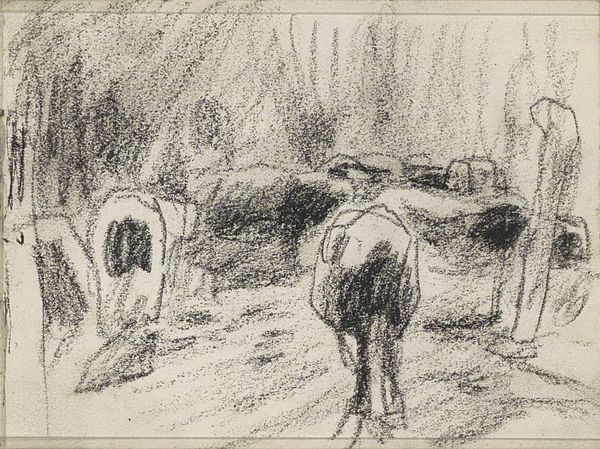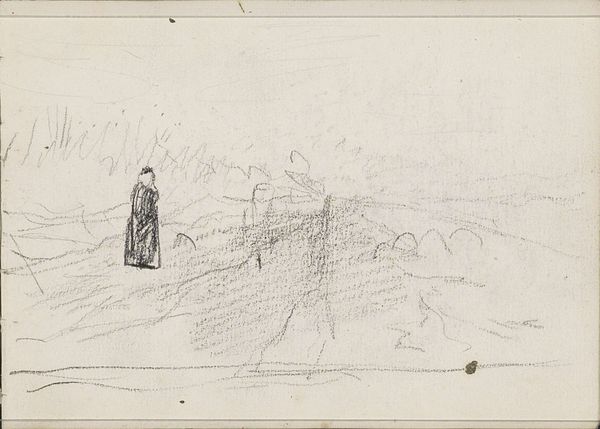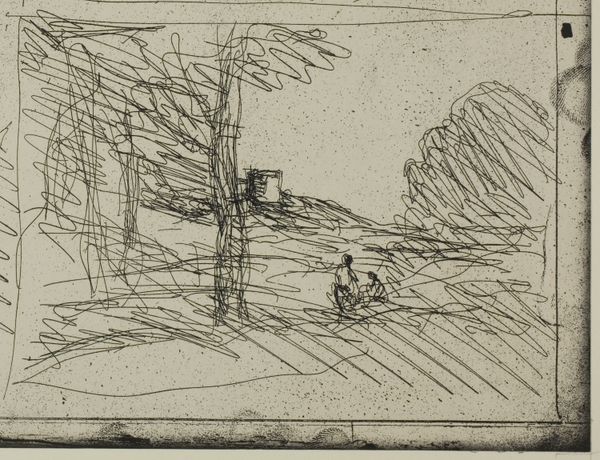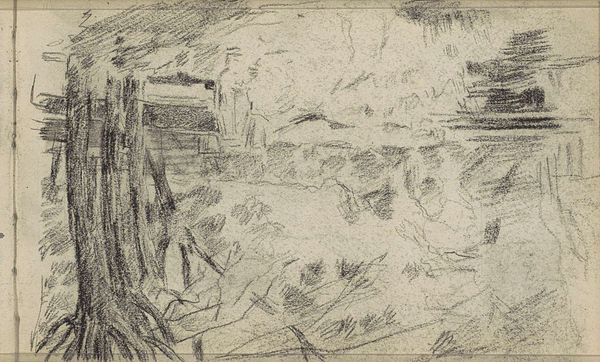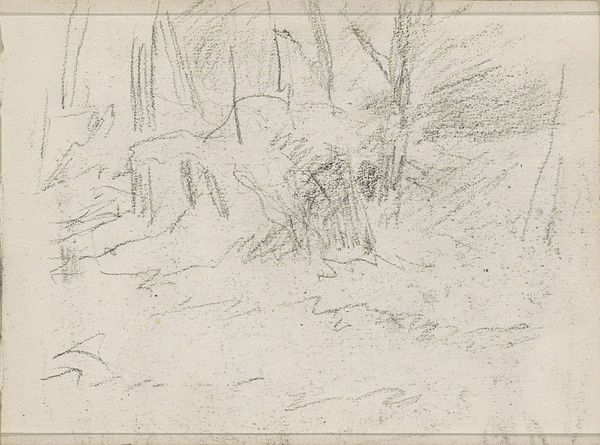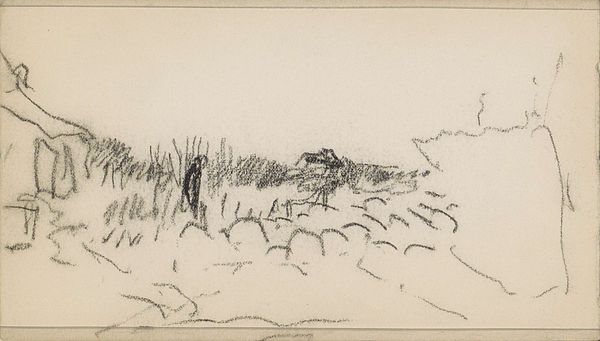
drawing, pencil
#
drawing
#
dutch-golden-age
#
pencil sketch
#
landscape
#
pencil
#
realism
Copyright: Rijks Museum: Open Domain
Editor: Here we have Anton Mauve's "Two Women on a Path by Some Rural Houses," made around 1876-1879 using pencil on paper. I'm struck by the anonymity of the women and the simplicity of the scene; there is almost an unsettled feeling. How do you interpret this work, especially given the time it was created? Curator: This drawing invites us to consider the realities of rural life in the late 19th century. Mauve often depicted scenes of the working class. Who are these women, and what might their daily lives entail? How does their position in Dutch society shape their visibility and representation, or lack thereof, within art? The deliberate lack of detail makes it universal, inviting viewers to project their understanding of gender roles, social status and their intersection onto the work. Editor: So, beyond the purely visual, we should also look for potential social commentary? Curator: Absolutely. Consider the Realist movement which sought to portray life as it truly was, especially for those often excluded from traditional art. Think about labor and gender --how did they intersect to create specific experiences for these women? Can this sketch open dialogues about social justice and the representation of marginalized communities within art history? Editor: That adds a new dimension. It's not just a simple sketch, but a window into societal dynamics of the time. It makes you wonder about their specific stories. Curator: Exactly! Art can spark those critical inquiries. What assumptions do we bring when viewing art? It encourages an ethical way of seeing that bridges historical empathy and activism for our time. Editor: Thank you, this insight shifts the whole perception of what seemed like a quick sketch to something far more profound. Curator: Precisely, questioning assumptions, engaging with historical contexts, and thinking through social relations - these tools ensure artworks such as Mauve's carry meaning beyond aesthetic contemplation.
Comments
No comments
Be the first to comment and join the conversation on the ultimate creative platform.
